Branding
The Ultimate Authentic Brand Identity Design Process
09.02.2025
By Shaikh Asif
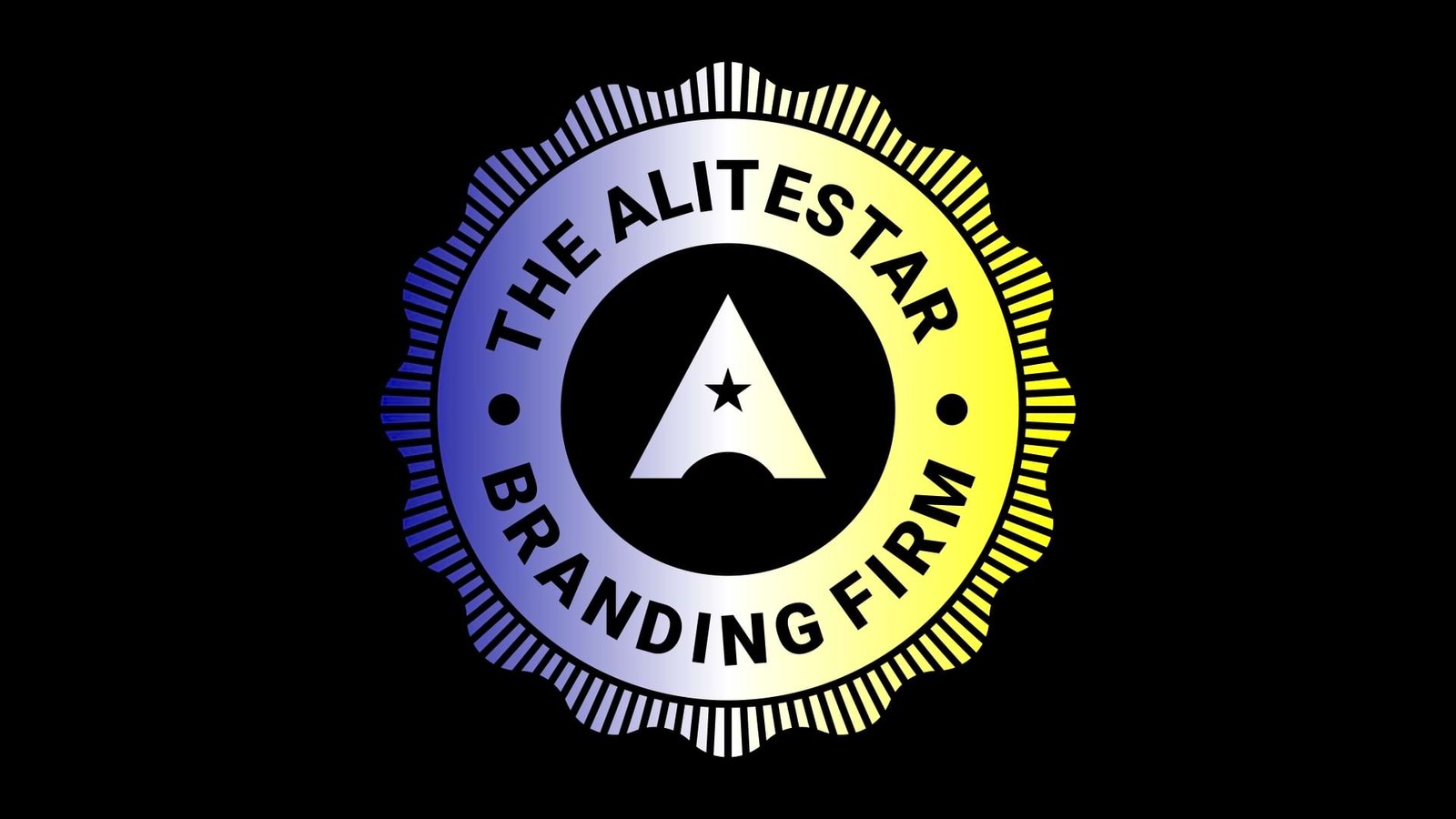
Branding
09.02.2025
By Shaikh Asif
Creating a brand’s look and feel is like telling a story that shows what the business is all about. It’s a mix of smart planning and creative ideas, all made to connect with the people you want to reach. This isn’t just about looking good; it’s about telling a story that fits with what the brand stands for and where it wants to go. From the first steps of planning to the final design, every part is chosen to show the brand’s character and way of speaking. It’s a careful look into the business, figuring out its role in the market, and making it stand out from others. Let’s explore how we build the Omulux brand’s look, where every detail speaks to the brand’s feel of luxury and class.
Creating a brand identity requires strategic thinking and creative vision strategic thinking and creative vision. Before diving straight into designing concepts, we first develop a comprehensive brand strategy.

This strategy serves as a foundational exploration of the business, delving deep from internal workings to external market dynamics. We consider all the strategic elements of our brand strategy core guide, starting with the brand essence—the core values of the brand, its mission, and its vision. However, Our main focused on researching the target audience, conducting competitive analysis, and finally the personality of the brand.
Simply put, it all starts with viewing things from the client's perspective. We delve into what they want to see, what goals they want to achieve, their pain points, desires, and aspirations. Simultaneously, analyzing the strengths and weaknesses of competitors. The art lies in harmonizing this research and analysis to nurture creative ideas.
During this phase, we engage in discussions with our clients to make crucial decisions. After working together on this, we start creating the design concepts for the identity. Let me guide you through the detailed process of how we carefully shaped the Omulux brand identity, beginning with the initial strategy phase.
Target Audience
Competitive Analysis
Brand Personality
Brand Voice
Mind Map
Mood Board
Designing Identity Concepts
Your starting point needs to be always with the target audience because everything you create is tailored to their needs, not designed solely to please the CEO or to impress fellow designers.
In this case, the ideal target audience of omulux was millennials who want to achieve luxurious living. We are not going into details here but we consider the visual preferences and aesthetics of millennials. What colors, styles, or imagery resonate with them and design, to appeal to their tastes?

By understanding the target audience, and their pain points we were able to speak directly to the aspirations and the desires of millennials seeking luxury living. And the story and messaging that resonate with them, for example, the narratives that emphasize luxury, comfort, and the lifestyle they desire. Understanding the target audience is crucial because it significantly enhances the likelihood of creating a meaningful connection with these individuals through the right logo, business cards, and overall brand identity.
Second, we conduct competitive analysis or Market Audit the 5th strategic elememts of the brand strategy to analyze the competitors to differentiate from them because the ultimate goal of brand design is to differentiate and stand out from the rest. So you just need to analyze your competitor's aesthetics, strengths, and weaknesses, but not copy or blend with them.

In the market audit strategic elements of our brand strategy core framework, we analyze the competitor's strengths, weaknesses, and threats and also identify some opportunities to differentiate from them. We also look closely at the positioning statement to find important keywords. For example, we found words like "crystal opulent," "luxury living," "classic," and "sophisticated." As designers, you probably have some creative ideas to visually express these concepts. Take "Crystal Opulent," for instance. We can use a soothing crystal blue color to represent it visually, creating a sense of comfort and tranquility. In terms of typography, designers are well aware that incorporating classic and elegant serifs into the design can effectively enhance the sense of sophistication and classic aesthetics.
So here we need to look for words that would capture as many ideas about the brand so that we can use them later on in the creative art direction phase.
Think of your brand as a person. If your brand were a person, what traits and characteristics would it have? Would it be friendly, professional, or sophisticated?
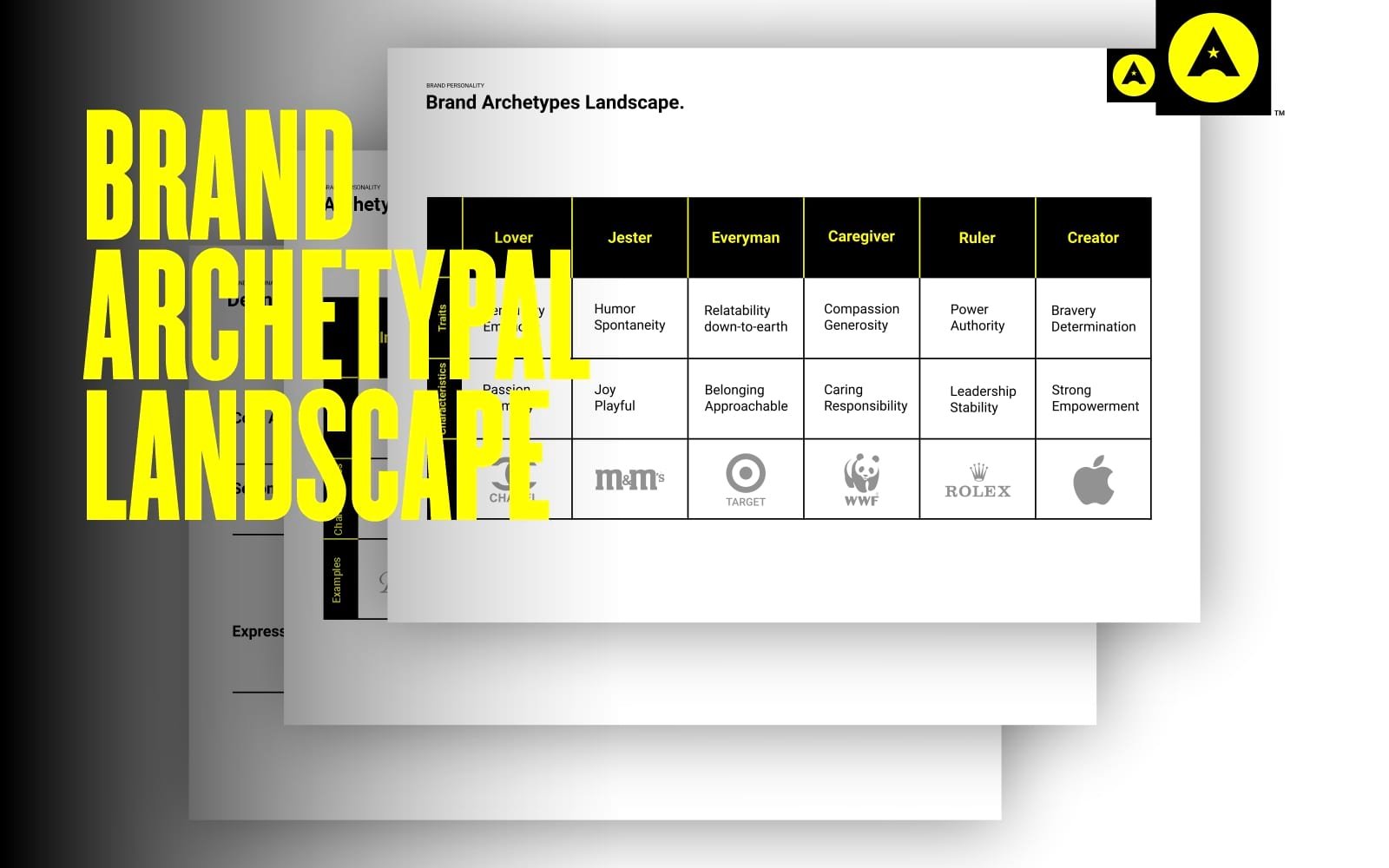
Recognizing these characteristics provides a solid base for your brand's look and feel. The personality traits you've linked to your brand can influence the choices in visual design. Certainly, understanding the personality traits of Omulux—such as being artistic, classic, luxurious, exclusive, and sophisticated—acts like a guide. It helps us make informed decisions about picking colors, selecting fonts, and deciding the overall visual style for the brand.
These traits act as a clear guide, steering our creative decisions in design. It ensures that every aspect of our brand identity perfectly matches these characteristics, creating a resonance with our target audience.
Here's another crucial aspect we consider when shaping a memorable brand identity. The tone of voice plays a vital role in establishing a personal connection with the target audience. As we craft the visual elements of your brand, this connection guides our design choices, ensuring they resonate with the intended viewers.
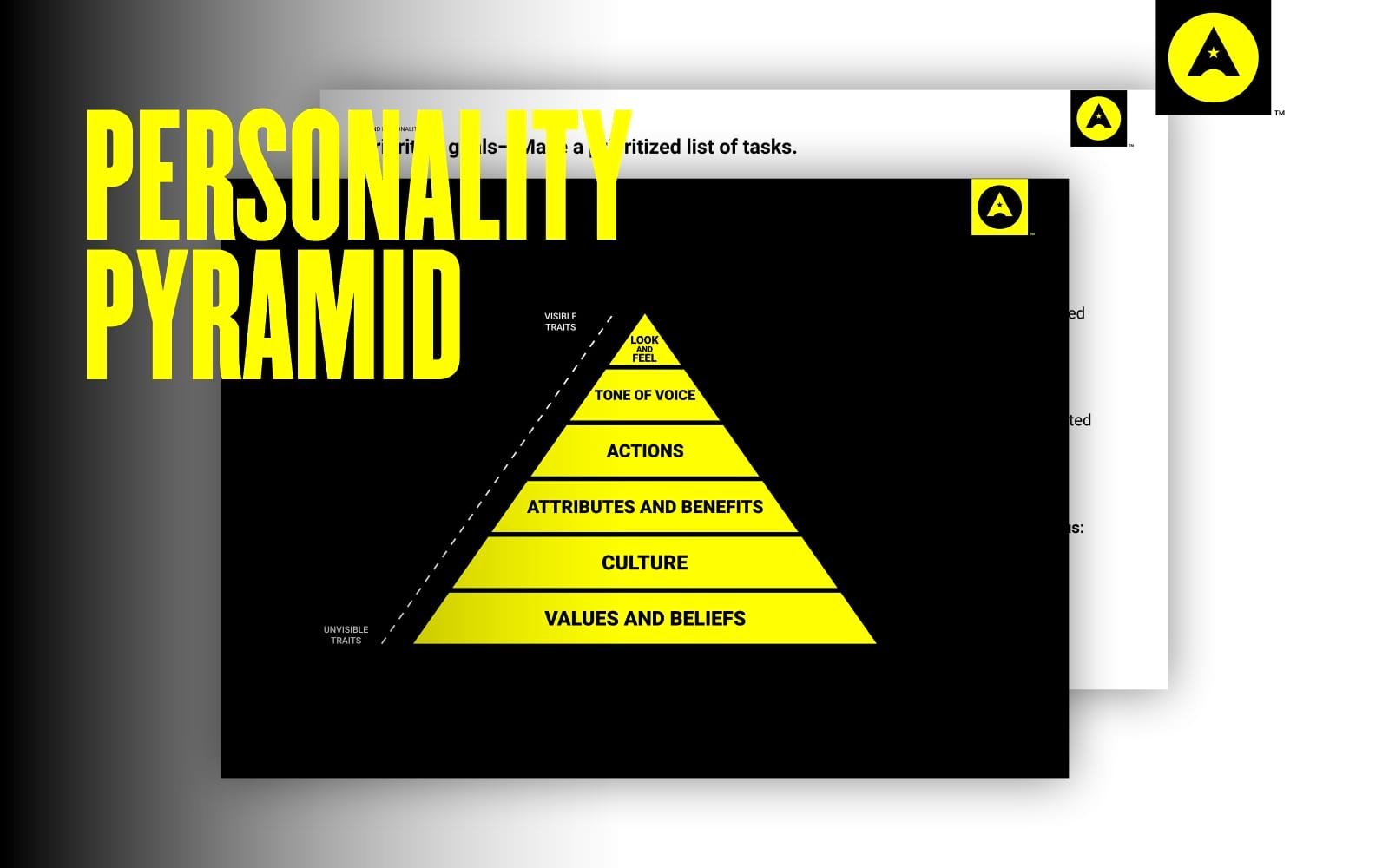
Understanding the tone of voice gives designers a solid foundation for their creative concepts. It helps create visuals that sync seamlessly with the brand's language, ensuring consistency. A well-defined tone of voice allows the design to tap into the emotions linked to the brand. Designers can incorporate elements that trigger the desired emotional responses from the audience, contributing to a powerful brand identity.
The brand's tone of voice aligns with specific messaging. For example, we want to convey that Omulux is a brand with classic, acoustic, opulent living, and sophisticated values. So, our design needs to encapsulate these values through color choices, imagery, and layout.
Your brand's personality and voice work together to express "how" your brand messages come across. When figuring out your tone of voice, it's crucial to keep your target audience in mind. Remember, every aspect of brand strategy is interconnected, ultimately converging into the overarching brand concept. So, we gather key insights, creative ideas, and inspiration, consolidating them into a concise set of visual keywords.
These keywords become the building blocks for creating a mind map, a valuable tool in the later stages of brand identity development.
Let's kick off the mind map by placing the brand name at the center of the page. From there, we'll branch out into various thoughts and ideas, following our brand strategy framework step by step. As you progress through the framework, you'll accumulate a multitude of keywords, ideas, and thoughts. Arrange them on one page and explore how you can expand your mind map.
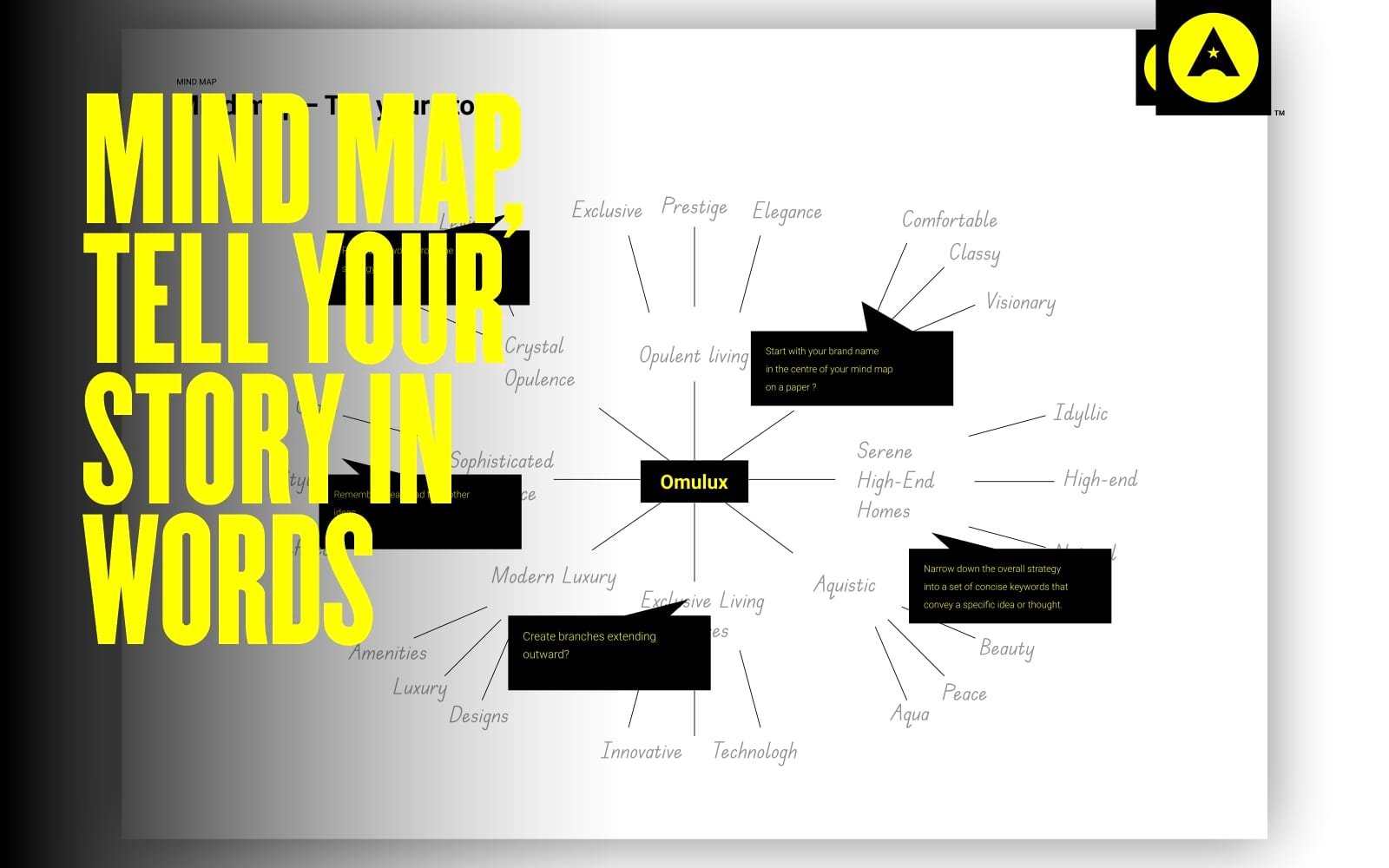
The beauty of this tool lies in its boundless branching possibilities—each idea leads to another. The aim is to generate as many ideas or thoughts as possible. This collection of ideas and keywords will be the cornerstone for developing visual inspirations and mood boards. Remember, you don't have to pursue every single idea or thought. Instead, focus on highlighting the strongest ideas and keywords that instill confidence and guide you in the right direction. Throughout this process, both creative vision and strategic thinking play vital roles.
So in this omulux brand, we have created a mood board from those outlining keywords to narrow down our research and focus on creating design concepts. Mood boards provide visual inspiration by collecting images, colors, patterns, and textures that resonate with the brand's personality, values, and intended message. They help in exploring different design directions.
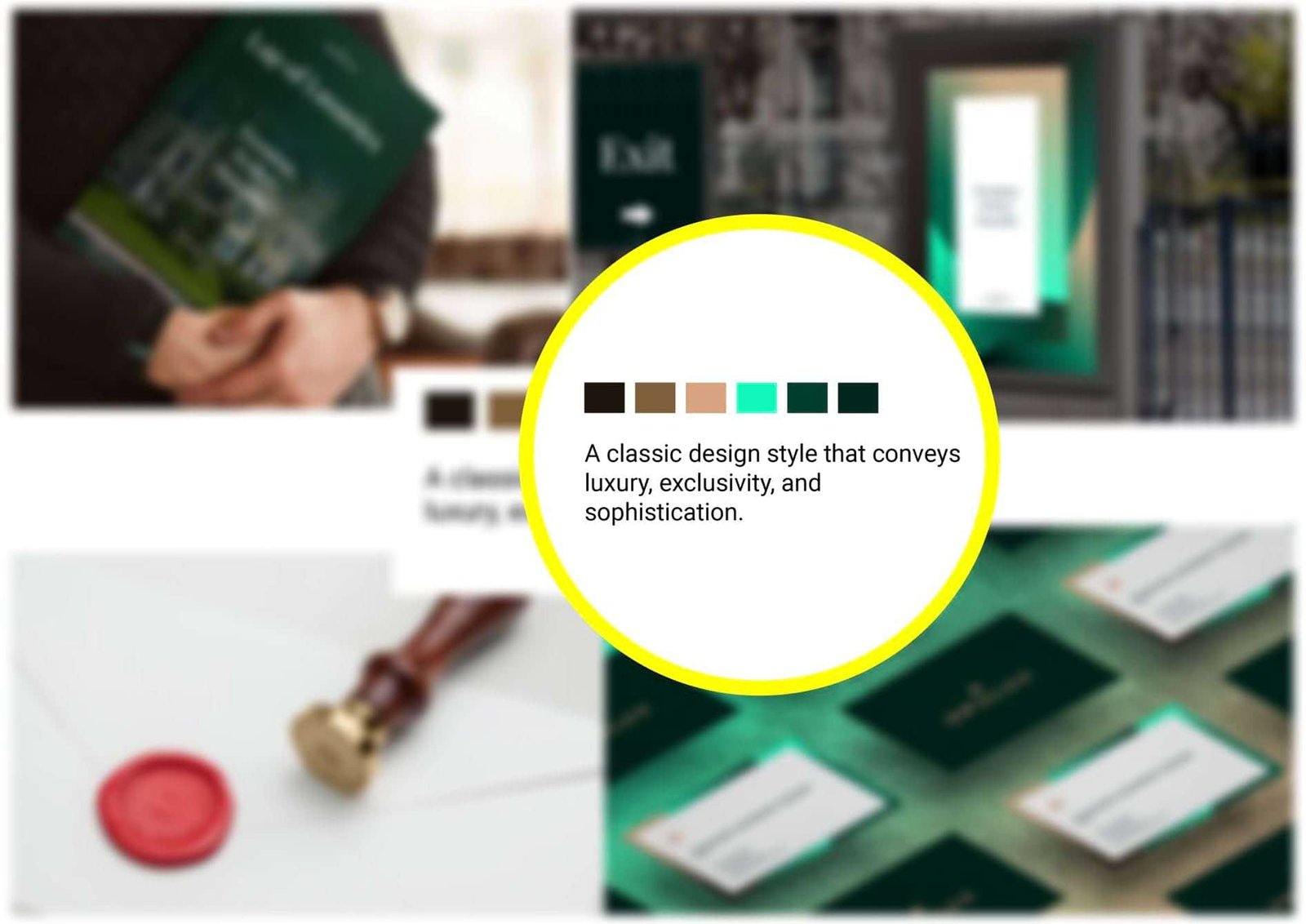
We started exploring visual references, colors, typography, patterns, images, and other graphics that could represent those ideas. Your goal is to create a solid mood board by gathering high-quality relevant inspiration. There are so many resources out there to get inspiration but some more popular resources are
Behance, dribble, or Pinterest.
However, exploring various design elements like fonts, colors, artworks, images, graphics, etc can be time-consuming so Instead of manually collecting design elements, an efficient way to create a mood board is to select complete identity projects available on platforms such as Behance, Dribble, or Pinterest.
Once we have identified keywords from the mind map, We can use them as search terms on design inspiration platforms. For example, our keywords include "luxury living," "modern elegance," or "sophisticated design," so, we input these terms into the search bar of these platforms to find relevant design projects that resonate with the intended mood or style.
This helps you uncover visuals, color schemes, fonts, and design elements that match your brand's identity vision. Once we've created a refined and classic mood board as our design inspiration for the brand, we proceed to discuss this direction with our client. This step is crucial as it ensures we're on the same page with their expectations and preferences. It's a pivotal checkpoint that prevents unnecessary work and ensures we're heading in the right direction.
After meeting with the client, we all agreed on the direction to go. We wanted to make an identity that mixes classic, fancy, and a bit of modern luxury. So, we got straight into designing, making a brand identity that feels classic but also has a touch of modern luxury.
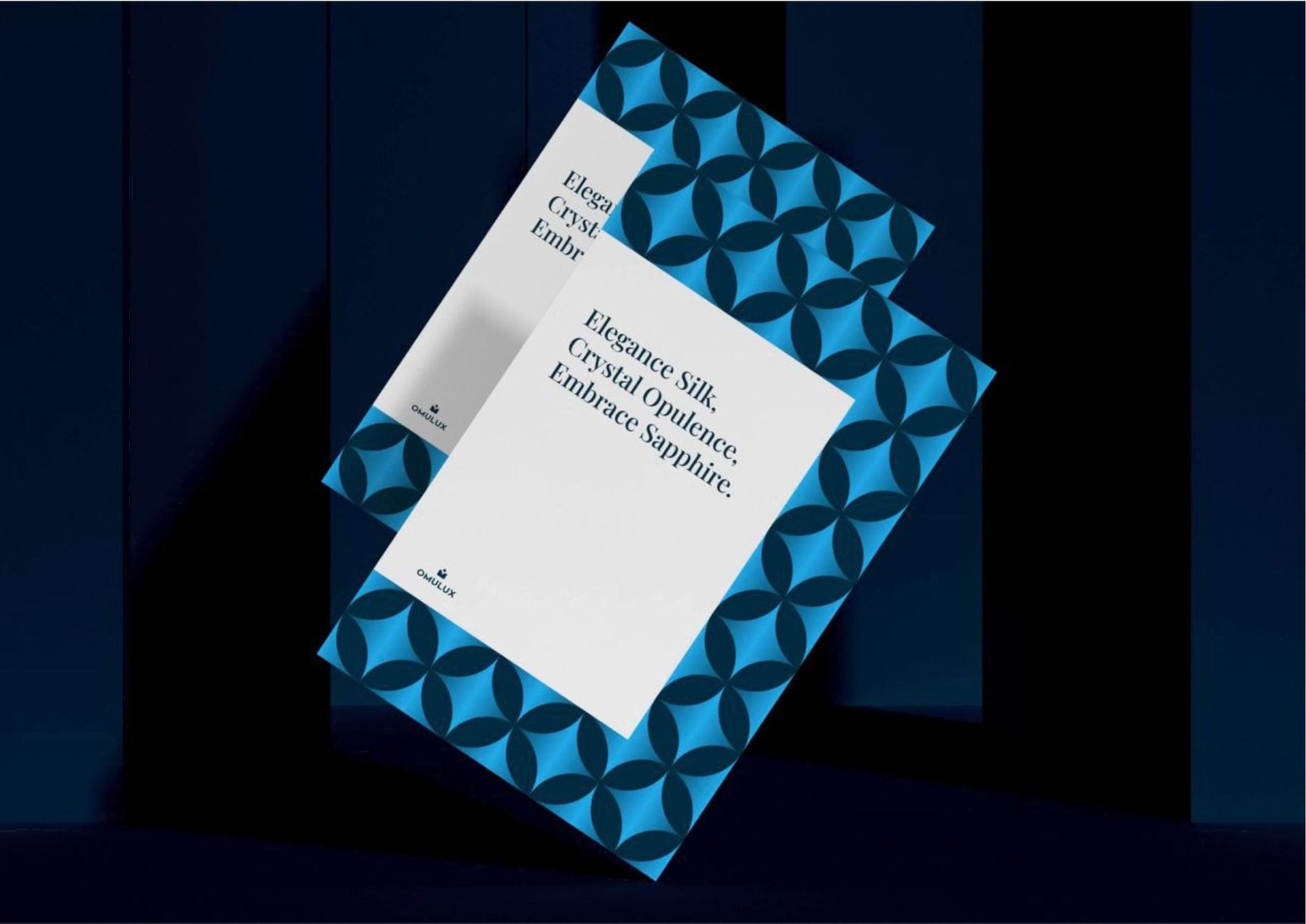
We won't dive into the details of the logo design process here, as that's not the main focus of this article. Instead, we want to showcase how we developed an identity concept based on brand strategy. The goal is to form a singular, cohesive concept that aligns seamlessly with the strategy. By following these steps, you'll craft a robust brand identity that truly connects with the hearts and minds of the brand's target audience.

We know you are wondering to see the complete brand identity of omulux.
When Certainly! Creating a brand identity involves strategic thinking and creative vision. We start by understanding the target audience, tailoring our designs to their needs. Next, we conduct a competitive analysis to differentiate from competitors while learning from their aesthetics. The brand’s personality traits guide our choices in colors, fonts, and style. A well-defined brand voice ensures consistency and emotional resonance. We organize our insights into a mind map, branching out ideas. Finally, the mood board narrows down research, reinforcing key points. Remember, brand identity is about meaningful connections with your audience.
By adhering to the brand strategy core guide, we ensure that every aspect of the brand identity resonates deeply, forging meaningful connections with the audience and achieving a distinguished presence in the marketplace.


Shaikh Asif is an Award-winning designer, director, strategist, and educator. He’s the Lead Strategic Brand Designer and Art Director of The Alitestar— a strategic branding and design agency that helps startups, ambitious CEOs, and passionate entrepreneurs to achieve success and ultimately create unforgettable brand experiences.